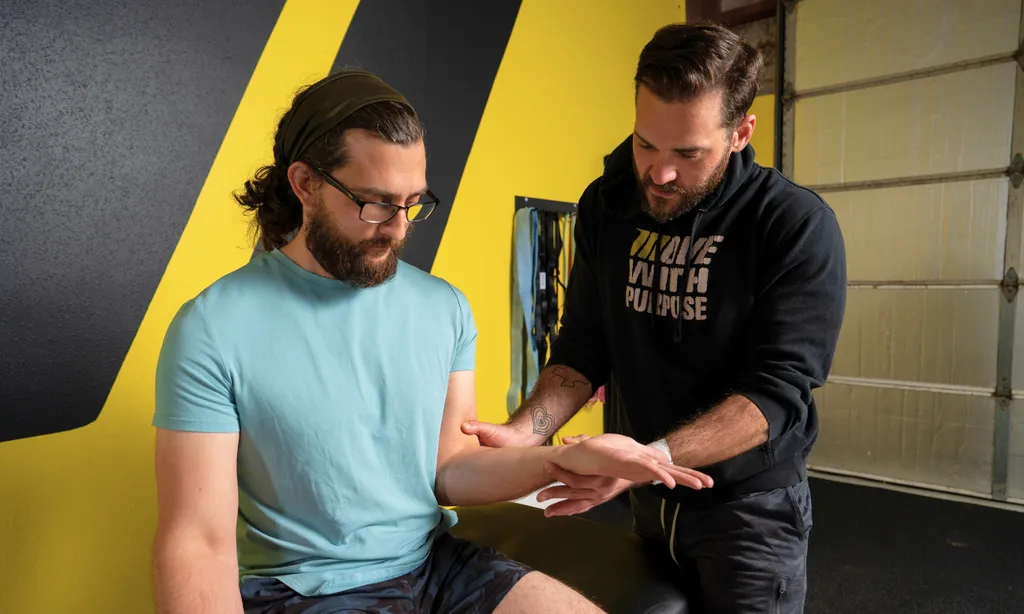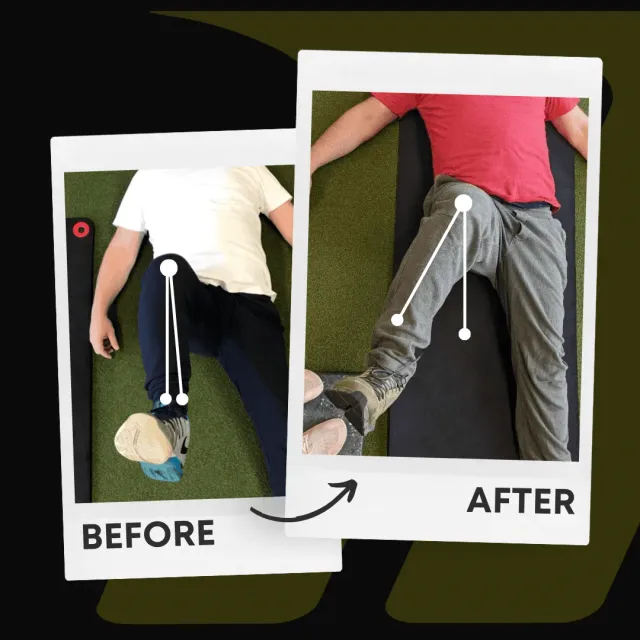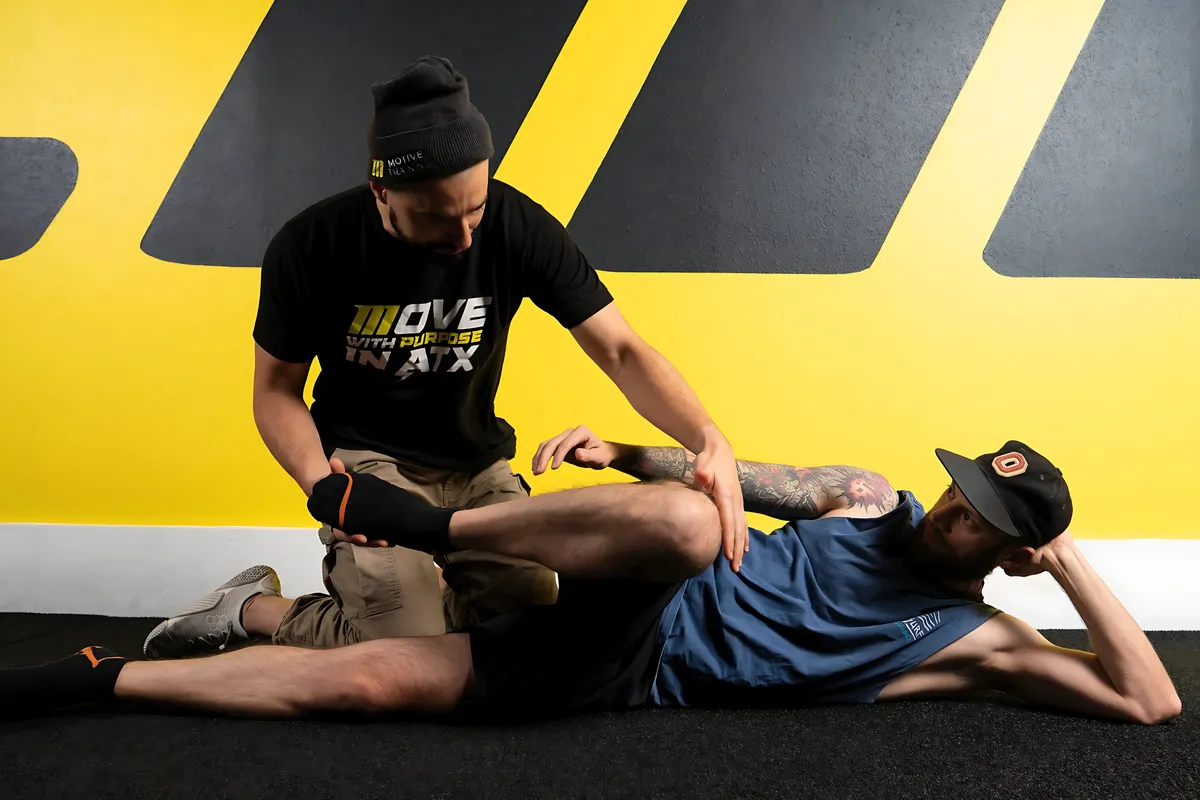Why Bodybuilders Should Use Functional Range Conditioning
February 2, 2025 | Functional Range Conditioning

Functional Range Conditioning (FRC), pioneered by Dr. Andreo Spina, has gained significant traction as an advanced system for improving joint health, mobility, and strength. For bodybuilders, who often emphasize muscle hypertrophy and strength through tested training methods, incorporating FRC principles can unlock new performance levels by addressing the often-overlooked components of usable ranges and joint function. Beyond aesthetics and brute strength, FRC empowers bodybuilders, bridging the gap between bodybuilding and long-term physical wellness, ensuring athletes can sustain their training longevity.
Moving Beyond Passive To Active Range of Motion
In bodybuilding, range of motion is critical in maximizing muscle engagement and growth. However, traditional training often prioritizes passive range—the extent to which a joint can move when external force is applied—over active range—the range a joint can achieve and control without assistance. This imbalance can lead to mobility deficits, compensation patterns, and an increased risk of injury.
FRC emphasizes systematically expanding a joint’s active range of motion, ensuring that bodybuilders not only reach the outer limits of their range but also gain the neurological control to use these newly acquired ranges effectively during training. By bridging the gap between flexibility and strength, FRC techniques like controlled articular rotations (CARs) ensure that every degree of motion is accessible and functional.
For example, a bodybuilder looking to improve their squat depth can utilize CARs to enhance hip mobility while teaching the nervous system to maintain control in the deeper ranges. This refined control allows for better muscle activation and reduced stress on compensating structures like the lower back.
Strength And Mobility: A Simultaneous Development
Bodybuilders often focus on isolating muscles for hypertrophy. While effective for building size, this approach can neglect the functional range of motion necessary for injury prevention and optimal performance. FRC brings a sense of balance to bodybuilding, integrating mobility training into existing routines, allowing for the simultaneous development of strength and usable motion.
Exercises like progressive angular isometric loading (PAILs) and regressive angular isometric loading (RAILs) are designed to strengthen tissue at end ranges, where most injuries occur. By training these extreme positions, bodybuilders can enhance their resilience and improve their ability to handle load across the full spectrum of motion.
Moreover, this approach allows for better alignment of the nervous system with muscular demands, creating a more efficient transfer of force. For instance, a bench press becomes more effective when shoulder joint integrity is maximized, as it reduces compensations and allows the pectoral muscles to carry the bulk of the load.
How FRC Complements Traditional Training Methods
Traditional bodybuilding routines emphasize external load and repetition volume to achieve hypertrophy. While effective, these approaches can lead to limited movement patterns and compensations that restrict the body’s ability to move efficiently. FRC fills this gap by addressing underlying joint health and movement limitations, which are often overlooked.
Key Benefits of Integrating FRC
- Improving Joint Integrity: Through techniques like CARs and capsule-specific exercises, bodybuilders can strengthen the deepest layers of tissue, enhancing the joint’s capacity to tolerate load.
- Optimizing the Nervous System: FRC works by simultaneously teaching the nervous system to control new ranges, allowing bodybuilders to access and train previously unavailable ranges safely and effectively.
- Integrating Functional Training: By focusing on the body’s ranges of motion and improving mobility, FRC prepares athletes to perform exercises with better form, reducing compensations and maximizing muscle recruitment.
- Building Resilience: Training at end ranges and addressing tissue-specific weaknesses ensures the body can handle external forces more efficiently, reducing injury risk.
For example, a bodybuilder aiming to improve deadlift performance can use hip and spine CARs to optimize joint rotation and stability. These movements ensure the necessary active range is accessible and controlled, leading to better alignment, reduced injury risk, and increased power output.
Preventing Injury And Extending Longevity
The repetitive nature of bodybuilding can lead to wear and tear on joints, often resulting in chronic pain or limited mobility. Functional Range Conditioning provides proactive tools for addressing these issues, ensuring athletes can train longer without compromising their health and feel secure about their long-term health.
How FRC Prevents Injuries
- Enhancing Connective Tissue Resilience: Exercises like kinetic stretching and isometric loading improve the load-bearing capacity of tendons and ligaments, reducing strain during heavy lifts.
- Rehabilitating Injuries: By systematically expanding the available range of motion and addressing the root causes of movement limitations, FRC can assist in injury rehabilitation, enabling a faster return to training.
- Preventing Future Issues: Focusing on joint health and movement potential, FRC builds a foundation that reduces the likelihood of overuse injuries common in bodybuilding.
Injury prevention is particularly important for seasoned bodybuilders who have accrued years of repetitive stress. FRC’s focus on joint capsule health and neurological control addresses these accumulated deficits, ensuring the body remains adaptable to new training demands.
Practical Applications For Bodybuilders
Incorporating Functional Range Conditioning into a bodybuilding routine doesn’t mean overhauling your entire program. Here’s how to integrate it effectively:
-
Warm-Up with CARs Controlled articular rotations can prepare the nervous system and joints for the day’s workout, improving mobility and control in targeted areas like the hips, shoulders, and spine. For instance, shoulder CARs can activate and align the joint before pressing exercises for optimal performance.
-
Add End-Range Strength Training Include PAILs and RAILs to strengthen connective tissues in the positions you’ll use during your lifts. These exercises ensure the integrity of joints under load, reducing the likelihood of injury.
-
Use FRC for Recovery Implement techniques like isoramping and low-load isometric exercises on rest days to enhance recovery and maintain joint health. This approach helps reduce soreness and keep joints mobile between intense sessions.
-
Focus on Weak Links Use Functional Range Assessment (FRA) to identify areas of limitation and target them with specific FRC exercises. For example, if hip mobility is limiting your squat depth, focus on improving active hip rotation through targeted drills.
Scientific Knowledge Backing FRC Principles
The science behind FRC underscores its value for bodybuilders. Research highlights the importance of mobility training for optimizing both movement and muscle recruitment. For example, studies on the nervous system’s role in controlling range of motion demonstrate the effectiveness of methods like CARs in improving joint health and functionality.
Furthermore, by expanding the body’s capacity to move and withstand external force, FRC aligns perfectly with bodybuilding’s goals of strength, control, and resilience. Athletes who invest in mobility training often report greater career longevity as their bodies adapt more efficiently to the physical demands of heavy lifting.
Conclusion
Functional Range Conditioning is a game-changer for bodybuilders looking to enhance their performance, prevent injury, and build lasting strength. By prioritizing joint health, active range of motion, and end-range strength, FRC equips athletes to push their limits safely and effectively. Integrating these principles into your training bridges the gap between traditional bodybuilding and modern mobility techniques and sets the stage for sustainable, injury-free progress.
Whether you aim to add plates to your lifts, refine your physique, or stay injury-free, FRC provides the tools to achieve unparalleled results. Don’t just build muscle—build a body that can perform, endure, and thrive for years to come.
Written by:
 Brian Murray, FRA, FRSC
Brian Murray, FRA, FRSC
Founder of Motive Training
We’ll teach you both how to move with purpose so you can lead a healthy, strong, and pain-free life. Our headquarters are in Austin, TX, but you can work with us online by signing up for KINSTRETCH Online or digging deep into one of our Motive Mobility Blueprints.

